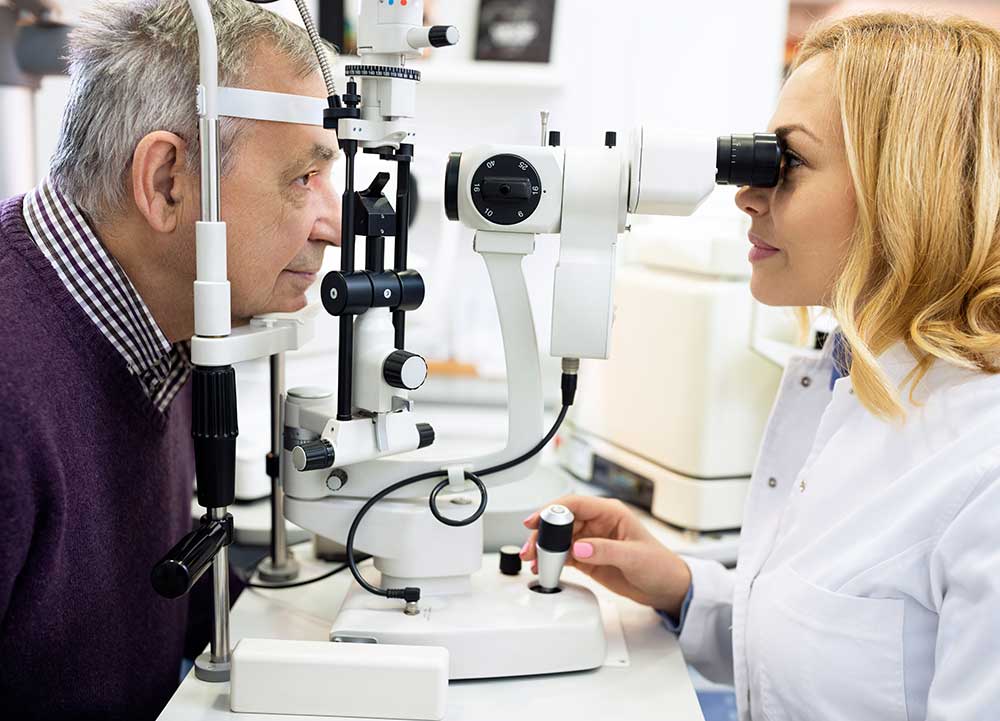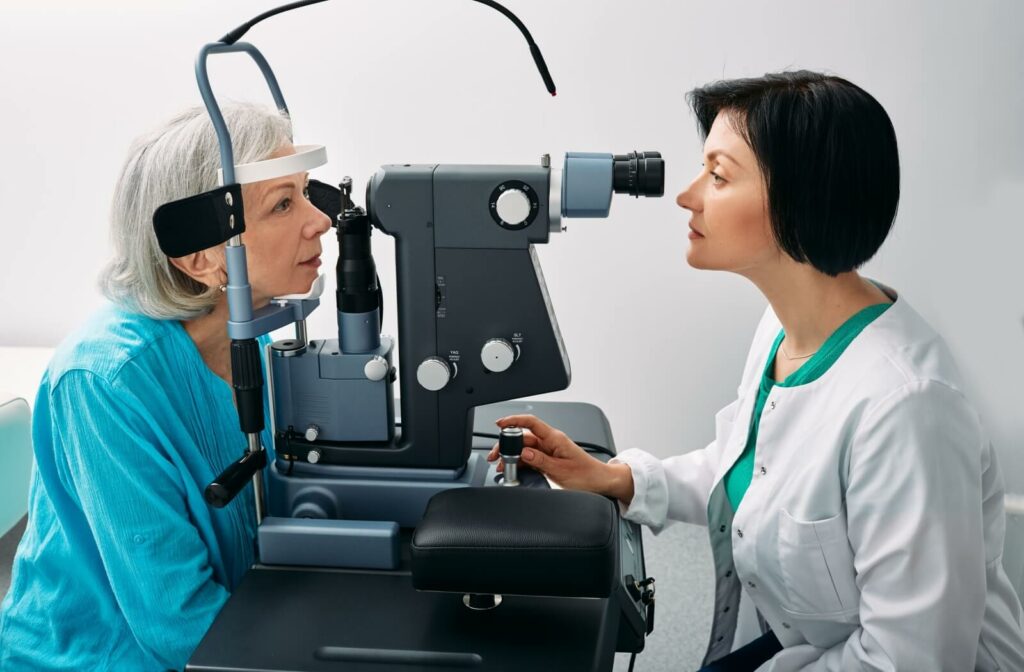Checking Out the Newest Technical Advancements in Optometry and What They Mean for Optometrists
From the precision of Optical Comprehensibility Tomography to the nuanced insights used by AI-driven analysis devices, these advancements are setting new requirements in patient analysis and treatment. As these advancements permeate the method, eye doctors are faced with the difficulty of welcoming these tools to boost patient end results.
Developments in Diagnostic Equipment
Advancing the area of optometry, technologies in analysis devices have actually reinvented the way eye care professionals examine and detect eye problems and aesthetic impairments. The past years has experienced substantial technological developments, allowing more comprehensive and exact analyses. Optical Coherence Tomography (OCT), for instance, supplies high-resolution cross-sectional pictures of the retina, enabling the early detection of conditions such as glaucoma and age-related macular degeneration. This non-invasive imaging technique has become vital in modern optometric practice.
An additional key advancement is the introduction of sophisticated corneal topography systems, which map the surface area curvature of the cornea with precision. These devices are specifically beneficial for fitting contact lenses and identifying corneal problems. In addition, digital retinal imaging has transformed conventional ophthalmoscopy, using thorough, scenic views of the retina that help with detailed aesthetic assessments.
The advancement of wavefront aberrometry has also been critical, allowing the evaluation of refractive mistakes with unparalleled precision (Eye Doctor). This technology helps in personalizing corrective lenses and boosting medical end results for refractive surgeries. Collectively, these analysis innovations encourage eye doctors to supply exceptional patient care, ensuring early intervention and customized therapy approaches, ultimately improving visual health and wellness outcomes
AI in Person Administration
Structure on the structure of advanced diagnostic devices, the incorporation of expert system (AI) in person monitoring represents a transformative jump for optometry. AI systems are progressively used to enhance performance, precision, and customization in patient care. By examining huge amounts of information, AI can identify patterns and forecast possible eye problems, making it possible for optometrists to customize interventions better. This capability is important in taking care of chronic eye conditions such as glaucoma and diabetic retinopathy, where very early detection and constant surveillance are crucial.
Moreover, AI-driven platforms help with structured patient interactions and administrative procedures. Automated organizing, virtual consultations, and personalized follow-up strategies not only boost individual contentment however likewise maximize time monitoring for practitioners. These systems can triage individuals based upon the seriousness of their conditions, ensuring that those in vital demand obtain punctual interest.
Moreover, AI enhances decision-making by providing optometrists with evidence-based suggestions and therapy paths. By incorporating information from digital wellness records, AI tools use understandings that inform medical choices, decreasing the threat of mistakes and boosting individual end results. As AI remains to advance, its role in patient administration will likely broaden, improving the landscape of optometric care.
Advances in Retinal Imaging
In the realm of optometry, retinal imaging has observed impressive technical developments that are enhancing diagnostic capacities and person care. Developments such as Optical Coherence Tomography (OCT) and fundus digital photography have reinvented how optometrists assess the retina and imagine. OCT, specifically, offers high-resolution, cross-sectional images of the retina, enabling the thorough exam of its layers. This capacity is invaluable for early discovery and management of additional info problems like glaucoma, diabetic retinopathy, and age-related macular deterioration.
Boosted imaging methods like OCT angiography are additional refining diagnostic precision. This non-invasive technique maps blood circulation in the retina, providing critical understandings right into vascular wellness without the requirement for dye injections. Additionally, flexible optics modern technology is being incorporated into retinal imaging systems to deal with eye aberrations, delivering extraordinary photo clearness. Such improvements help with the recognition of min retinal modifications that might signify illness development.
Moreover, advancements in fabricated knowledge are augmenting retinal imaging by enabling computerized evaluation of huge datasets. These systems aid eye doctors in identifying patterns a measure of pathology, consequently boosting analysis precision and efficiency. Collectively, these developments are changing retinal imaging into a keystone of modern eye care, enhancing results and broadening therapeutic opportunities.
Teleoptometry's Growing Function
Teleoptometry is progressively ending up being an essential component of eye treatment, driven by developments in data and analysis devices. As optometry embraces digital makeover, teleoptometry promotes remote consultations, allowing eye doctors to expand their solutions past conventional boundaries. This is especially beneficial in underserved and rural areas where access to specialized eye treatment is often restricted. By leveraging high-resolution video conferencing and progressed retinal imaging, optometrists can carry out extensive eye examinations from afar, making sure timely medical diagnosis and therapy.
The integration of expert system (AI) more enhances teleoptometry, allowing the analysis of visual information and assisting in the discovery of eye conditions such as glaucoma and diabetic person retinopathy. AI-powered formulas can rapidly analyze complicated imaging data, supplying eye doctors with useful understandings that boost professional decision-making.
In addition, teleoptometry sustains connection of care via seamless combination with electronic health records (EHRs), allowing optometrists to maintain thorough individual histories. This makes certain that people obtain tailored and regular care also when speaking with various professionals.
In spite of these benefits, difficulties continue to be, including ensuring information protection and managing client expectations. Teleoptometry stands for a considerable stride in the direction of even more available, efficient, and patient-centered eye care. As technology develops, its function is poised to broaden even more.

Future Trends in Eye Treatment
A myriad of cutting-edge fads is set to improve the future of eye treatment, driven by technological improvements and the evolving needs of individuals. One significant fad is the combination of expert system (AI) in diagnostics, which assures to boost the precision and efficiency of eye evaluations. AI algorithms can assess huge amounts of information from look here retinal photos, possibly spotting conditions like diabetic retinopathy and glaucoma earlier than traditional techniques.
Additionally, individualized medication is getting traction in optometry, with hereditary screening informing tailored treatment plans. This approach aims to maximize individual end results by customizing interventions to specific hereditary accounts. Wearable technology, such as smart contact lenses, is likewise coming up, supplying real-time tracking of intraocular pressure or sugar levels, thus offering continual insights right into systemic and eye health.
The fostering of increased fact (AR) and online fact (VIRTUAL REALITY) in training and individual education is one more emerging pattern. These innovations supply immersive experiences that can boost understanding and skills both for clients and optometrists. As these patterns develop, eye doctors must stay abreast of technological improvements to offer innovative treatment, making sure enhanced client end results and satisfaction in the internet dynamic landscape of eye care.
Final Thought

Jointly, these diagnostic innovations equip optometrists to deliver remarkable individual care, guaranteeing early treatment and customized therapy techniques, inevitably boosting visual health and wellness results.

As these modern technologies continue to develop, eye doctors must adapt and integrate them into technique, eventually enhancing operations performance and raising the requirement of eye treatment provided to people.